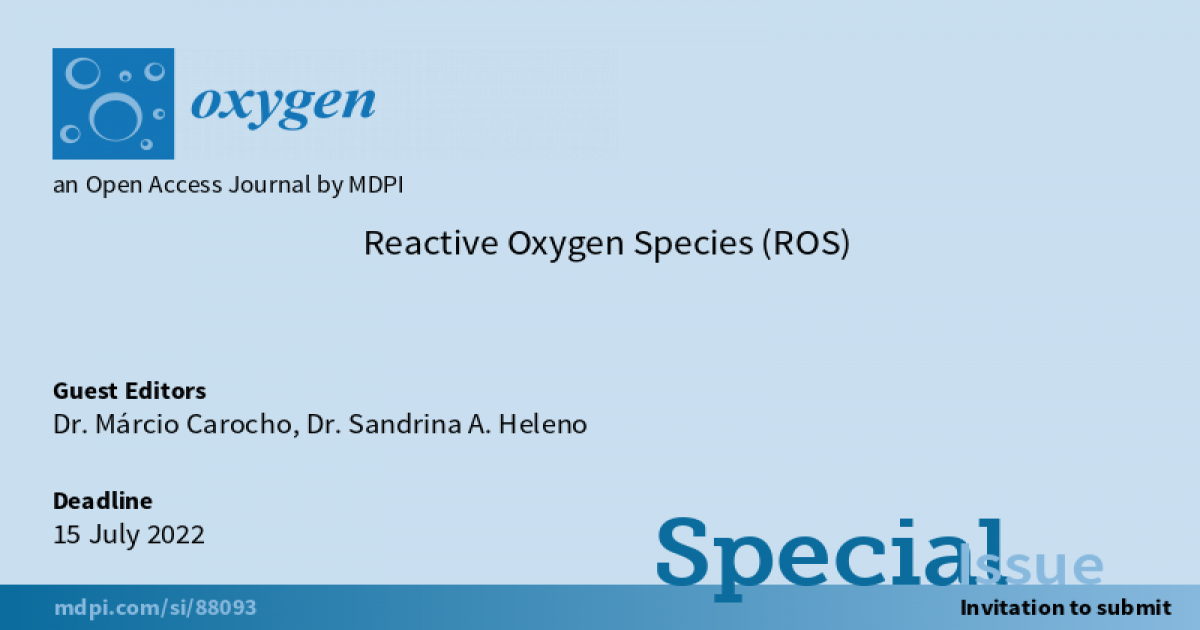Reactive Oxygen Species (ROS)
A special issue of Oxygen (ISSN 2673-9801).
Deadline for manuscript submissions: closed (15 July 2022) | Viewed by 2169

Special Issue Editors
Interests: chemistry of natural products; nutraceuticals and functional foods; technology of natural products; engineering of protective food products with natural compounds
Special Issues, Collections and Topics in MDPI journals
Interests: bio-based ingredients; stabilization of natural additives; functional foods; extraction optimization; food science and technology
Special Issues, Collections and Topics in MDPI journals
Special Issue Information
Dear Colleagues,
Reactive oxygen species (ROS) are unstable molecules that have oxygen in their constitution and tend to easily react with molecules in their vicinity. As soon as antioxidants were discovered, the perception of ROS, as well as RNS (reactive nitrogen species) and RSS (reactive sulfur species), by the scientific community has been negative. This, however, has changed in recent years, with the discovery of the physiological activities of ROS, as well as signaling pathways, in the immune system acting against infections as flow modulators of the blood and mitogenic response, among many others.
Thus, this Special Issue intends to focus on any aspect related to ROS and their positive and/or negative effect on the human body.
Dr. Márcio Carocho
Dr. Sandrina A. Heleno
Guest Editors
Manuscript Submission Information
Manuscripts should be submitted online at www.mdpi.com by registering and logging in to this website. Once you are registered, click here to go to the submission form. Manuscripts can be submitted until the deadline. All submissions that pass pre-check are peer-reviewed. Accepted papers will be published continuously in the journal (as soon as accepted) and will be listed together on the special issue website. Research articles, review articles as well as short communications are invited. For planned papers, a title and short abstract (about 100 words) can be sent to the Editorial Office for announcement on this website.
Submitted manuscripts should not have been published previously, nor be under consideration for publication elsewhere (except conference proceedings papers). All manuscripts are thoroughly refereed through a single-blind peer-review process. A guide for authors and other relevant information for submission of manuscripts is available on the Instructions for Authors page. Oxygen is an international peer-reviewed open access quarterly journal published by MDPI.
Please visit the Instructions for Authors page before submitting a manuscript. The Article Processing Charge (APC) for publication in this open access journal is 1000 CHF (Swiss Francs). Submitted papers should be well formatted and use good English. Authors may use MDPI's English editing service prior to publication or during author revisions.
Keywords
- reactive oxygen species
- antioxidants
- prooxidants
- free radicals
- preservatives
- oxidation
- fermentation
- fenton reaction
- lipid autoxidation




